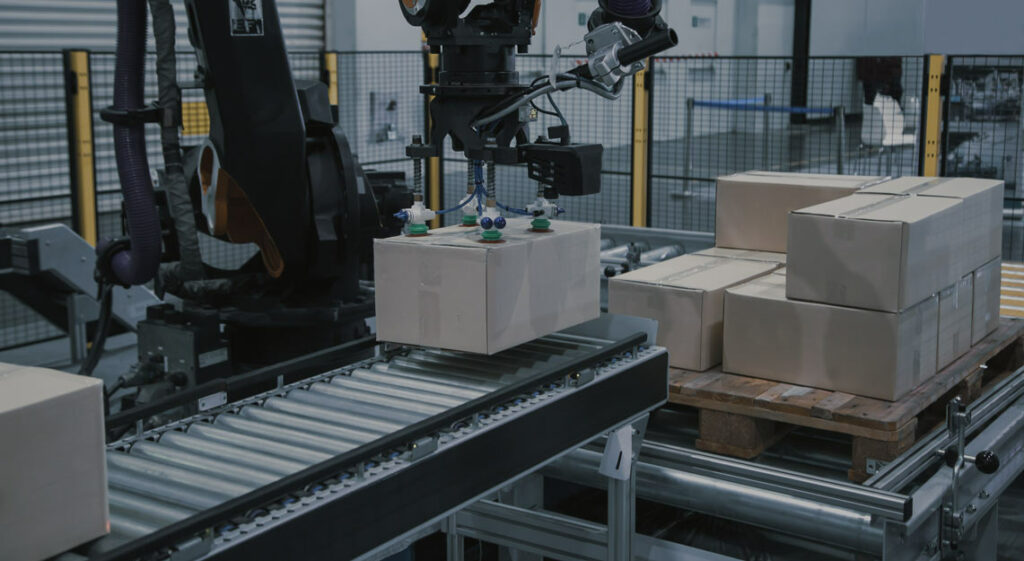Material Handling and Efficient Warehouse Operations
How do increased productivity, improved customer service, decreased costs and better overall business profitability sound to you?
According to data from the Journal of Emerging Technologies and Innovative Research, the key to efficient warehouse operations is the continuous optimization of material handling.
The study found that companies that aimed for efficiency by keeping up with emerging technologies and new material handling systems have a greater chance of achieving production goals.
Investing in efficiency is a good strategy for success, but how can warehouse operators begin to implement the right changes?
In this post, let’s discuss the ins and outs of warehouse efficiency and material handling.
Keep reading to learn more about different material handling strategies that can improve efficiency at your facility.
Warehouse Material Handling
Warehouse material handling is a lot of different things—manual, automated or semi-automated product movement, storage and control that support logistics and keep the supply chain moving.
When fully optimized, material handling can have positive effects on:
- Productivity
- Customer satisfaction
- Employee satisfaction
- Product integrity
- Safety
- Inventory management
- Delivery speed
- Order accuracy
- Material handling costs
Types of Material Handling
There are two main umbrellas under which material handling systems fall.
Manual Material Handling
Manual material handling involves employees moving product between production processes. This type of handling requires a lower upfront investment as used material handling equipment is affordable compared to automation, but improper warehouse design and poor-quality equipment can lead to an increased risk of injury.
Automated Material Handling
Automated or semi-automated material handling involves technical equipment and machinery to limit the manual movement of product in the warehouse. The idea is that automation helps reduce the risk of injury while streamlining workflow and preventing human error.

Most fully automated equipment for warehouses is not within an accessible budget, but even semi-automated equipment can improve efficiency by creating a steady heartbeat of movement that improves throughput at any facility.
This is especially true of warehouse management software. Depending on need, material handling equipment, software and systems can assist with:
- Forecasting and planning
- Workflow management
- Developing processes
- Inventory management
- Shipping and receiving
- Customer relations and sales
By implementing an integrated series of solid material handling systems and strategies, companies can improve their overall business performance and profitability.
Effective Material Handling in a Warehouse
With the long list of benefits that material handling optimization can bring to a warehouse, it’s easy to see the importance of prioritizing it at your facility.
If you’re just beginning to explore options in material handling equipment and solutions, check out these tips for getting the most out of your warehouse space.
Sophisticated warehouse management software can improve the accuracy of orders, forecasting and inventory management.
1. Take Advantage of Software
Sophisticated warehouse management software can improve the accuracy of orders, forecasting and inventory management. Forecasting software makes use of advanced algorithms that consider seasonality and costs to create more precise plans for resources and inventory.
Since the pandemic, more operations are looking to optimize their inventory management processes and improve storage capacity. The idea is to increase resiliency to disruptions and shortages. By implementing enterprise resource planning or inventory management tools, operators can optimize their inventory movement, decreasing the need to store unnecessary product.
3. Customize Your Warehouse Design
Warehouse design is critically important for warehouse productivity. By developing a comprehensive understanding of the needs of your team and facility, you will be able to customize a warehouse layout that improves storage capacity, throughput and efficiency.
Here are some things you should consider before developing a warehouse layout plan:
- The physical limitations of the facility
- Compliance with regulations
- Customer and client demand
- Receiving and shipping processes
- Information about inventory such as SKU diversity and volume, weight and dimensions
Designing a personalized warehouse layout with custom equipment solutions can be challenging without expert knowledge of facility design principles and equipment. Many operations elect to work with a warehouse design specialist to avoid common mistakes and make the process easier.

Increase Warehouse Efficiency With Material Handling Solutions
At East Coast Storage Equipment, we provide quality custom material handling equipment solutions to improve efficiency in your facility.CONTACT US
3. Optimize Storage Space
Equipment can make or break a facility’s efficiency. That’s why it’s important to ensure you’re selecting the right solutions and systems for your unique needs.
Take a look at your existing storage space. There may be alterations that could have a significant impact on efficiency. Depending on storage needs, maximizing existing storage space could mean making use of mezzanines to increase floor space, using pallet racking to increase storage capacity or investing in drive-in racking to densify storage.
Better Material Handling = Efficiency in Warehouse Operations
Bottom line: mastering material handling is the key to maximizing the potential of a facility. Here are a few benefits:
- Cost savings: Labor performance, picking costs, floor space costs and a reduction in workplace injuries are a few of the ways that material handling can lead to measurable cost savings for warehouse operators.
- Streamlined processes: Great material handling solutions lead to simplified, accurate processes that are easier to record and manage.
- Improved inventory management: Shipping, receiving and tracking inventory is made simpler with automated inventory systems, demand forecasting software or well-trained employees to perform inventory management manually.
Efficiency and Productivity in Warehouse Operations
Poorly managed material handling can result in injuries, disruptions, delayed production, mistakes, reputational damage and decreased customer trust. In order to stay competitive, warehouses must prioritize improving these processes as new possibilities and technologies emerge.
If you’re looking for ways to increase warehouse efficiency with material handling solutions, you’ve come to the right place. At East Coast Storage Equipment, we provide quality custom material handling equipment solutions to improve efficiency in your facility. Contact us today to learn more about how we can help.